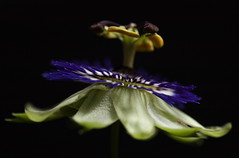Raw is simply a file format. The typical decision that most people are faced with is do I shoot raw or jpg?
The majority of people choose jpg because they have heard of it and it gives them loads of shots on their cards. Raw however, sounds weird, eats up available memory and means more time at the computer so why should you be using it?
1. Memory is cheap
In the olden days people shunned raw because of how much space the files consumed. I just checked on Amazon and memory cards are almost free these days and the good news is that they are going to continue to get cheaper!
Raw images will eat up loads more space on both your memory cards and your hard disc but with the cost of storage continually falling it’s no longer a reason to not use it.
The amazing thing about digital is that taking photos becomes free. You should be taking advantage of this by shooting lots of images and saving the keepers and ditching the rubbish.
With plenty of memory in the camera you can ensure that you’ll never have to worry about running out of space again as you know its going happen when that dream scene appears in front of you.
Accept sods law and plan for it, you cant fight it!
2. Correct images without losing throwing away quality
When you “process” a raw file you adjust it to suit what you want and then save a version as a jpg. The adjustments can be undone or tweaked to your hearts content without any detrimental effects to the raw file.
Every time you open and edit jpgs you throw away picture quality. Once jpgs are opened and repeatedly saved they are thus repeatedly re-compressed which effects the image quality.
You can see the effect of this in some jpgs where the image develops what are known as artifacts that are caused by over compression.
This can leave your images with a smeared appearance, reminiscent of the classic 80’s “Vaseline on the lens soft focus effect”.
3. Get the best quality original
What is the point in spending your hard earned £’s on the best camera you can afford, then spending your precious spare time taking photos if you are not taking the best quality originals that you can?
I always like to think that every time I go and shoot I might get that 1 in a million shot. Imagine that happening and then realizing you were shooting a low quality jpg and that your dream photo will never hold its own beyond a 800x600 version on flickr.
You would be gutted, don’t let it happen. If that hasn’t convinced you nothing will, you might as well go and sell your camera on eBay.
4. Get back what you shot in the first place
When you shoot film you get a negative that represents what you took. The processing machines takes this negative and changes it to give a normalized exposure and colour contrast etc.
The beauty of film is that you will always have the original negative. The problem with this is that keeping negatives free of dust is almost impossible. Even if you manage this the task of scanning, dust cloning, correcting is so arduous you’ll wish you never started.
When you shoot jpg you process the image in the camera. The camera makes lots of decisions for you and produces what it thinks is the best image. You’ll never get back what your camera has thrown away.
With raw you get the best of both worlds. You get the original file to which you can batch correct white balance and exposure. You are not throwing data away. You are not manipulating the image but just correcting it to represent what you saw.
The tools that you can use to work on raw files are widely available. A few that you might want to look into include:
Or read this comprehensive review of raw software at ultimateslr.com
5. Flexibility is your friend
We all make mistakes – we leave white balance on the wrong setting, we get the exposure wrong so why not give yourself more options and flexibility?
Within your typical raw file editor you can change the white balance to what you want and you are also able to tweak the exposure (typically by +/- 2 stops). This gives you a get out of jail card if for whatever reason you screwed it up in the field.
By shooting raw you are giving yourself a break. I am a typical weekend warrior when it comes to photography. My dedicated photo trips are few and few between so why not build in some flexibility around mistakes that you might make?
In the interests of arming you with useful information you need to consider what might be drawbacks to you when shooting raw.
Larger file sizes mean longer card writing times so raw is typically a non-starter for sports photography.
You may not have the right software to open and edit raw files so this is likely to be another expense.
By shooting raw you are inevitably going to need to convert the file to another format such as jpg to do anything with it. This means more time in front of the computer, which is never a great thing.
All things considered I think the quality argument wins it for me every time. Why not give raw a try and see if it fits with your style of shooting. You’ll quickly learn how you can adjust your workflow to accommodate what it the most flexible and highest quality file format.

1 comment:
good article mate! good reminder. thanks!
Post a Comment